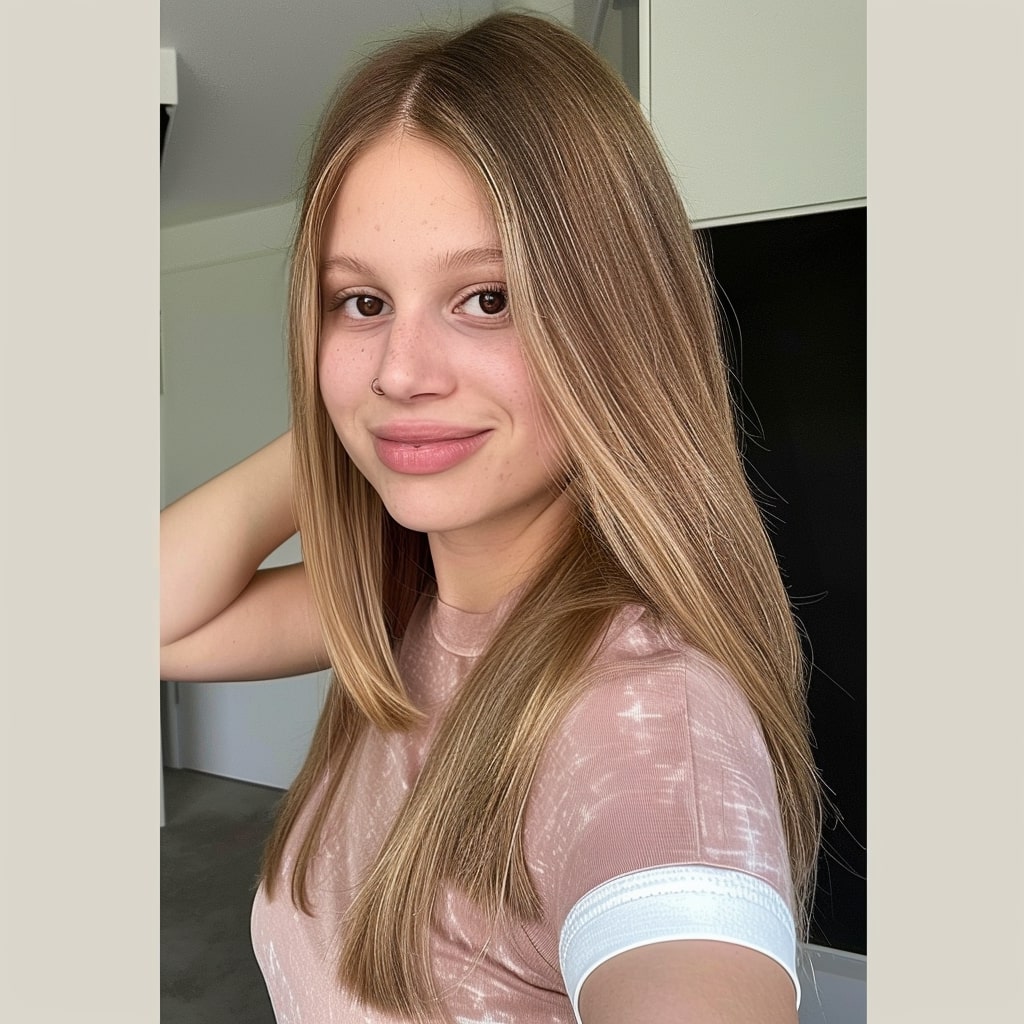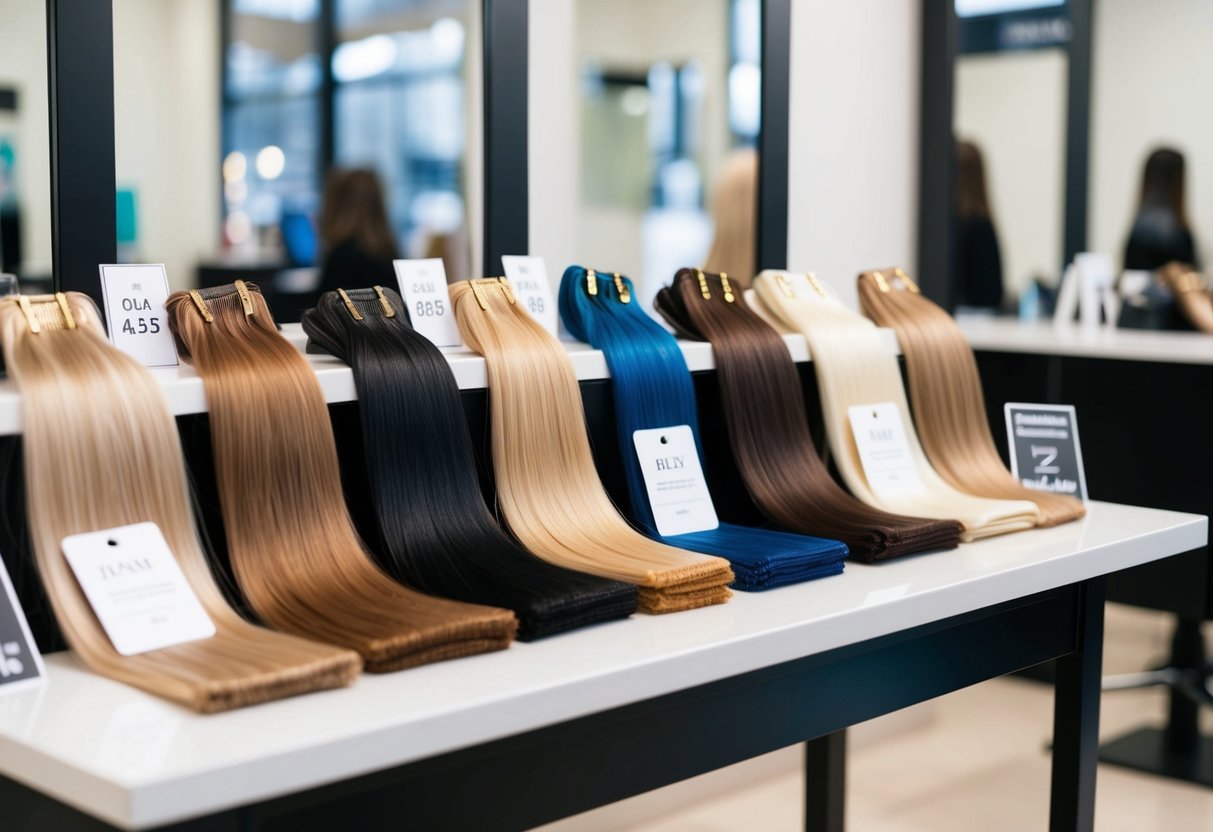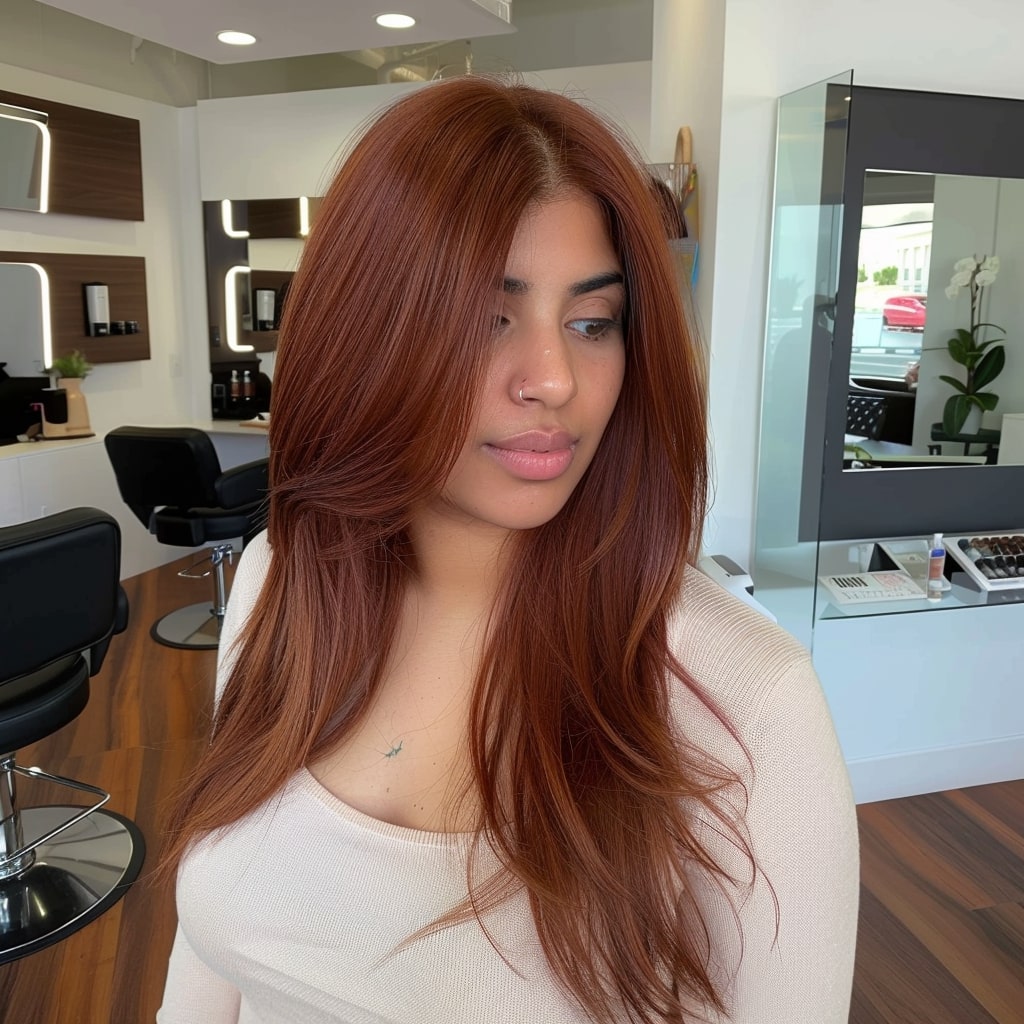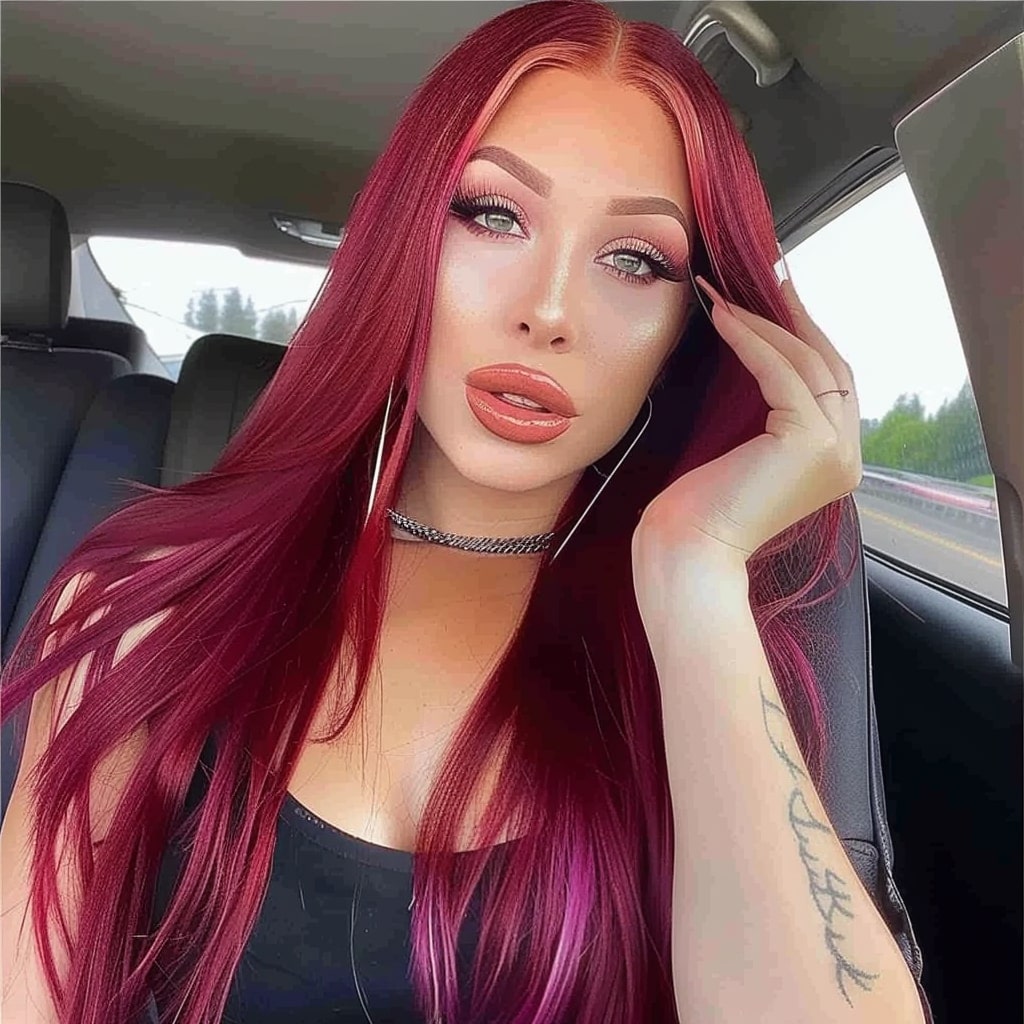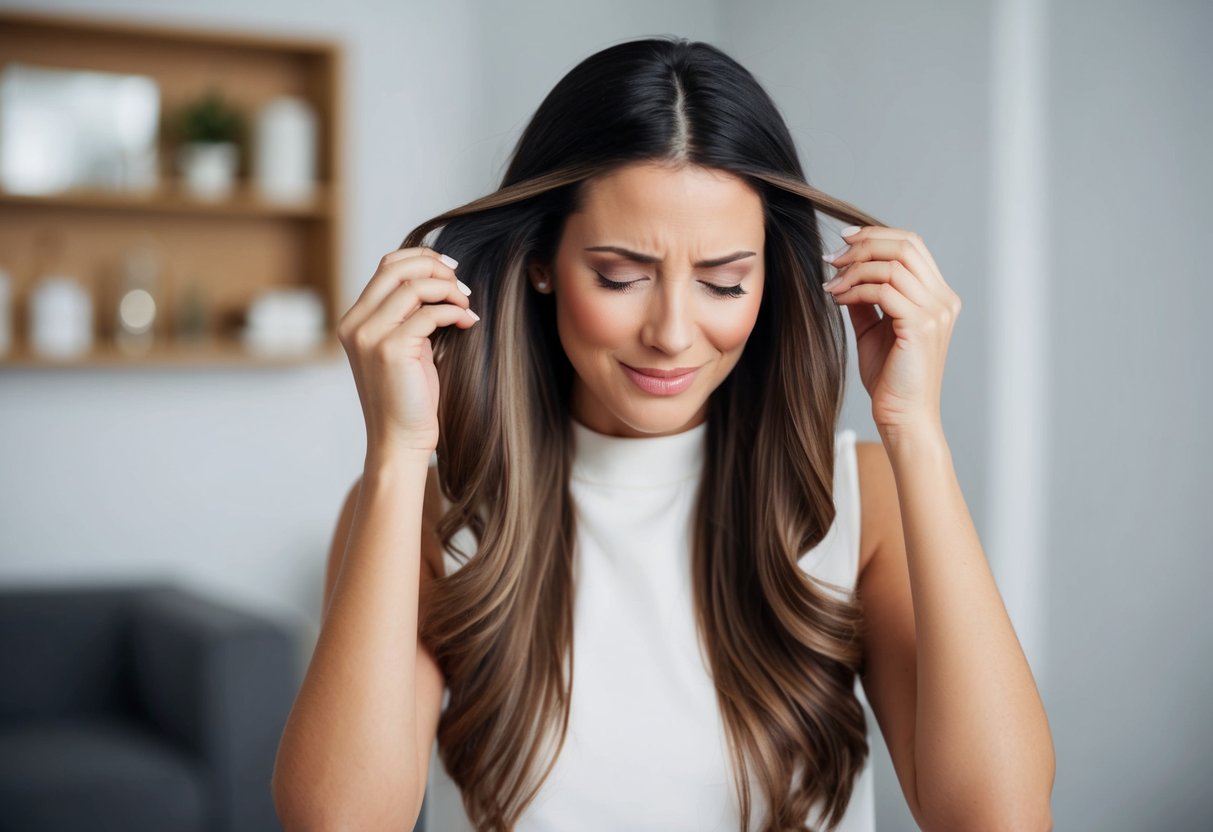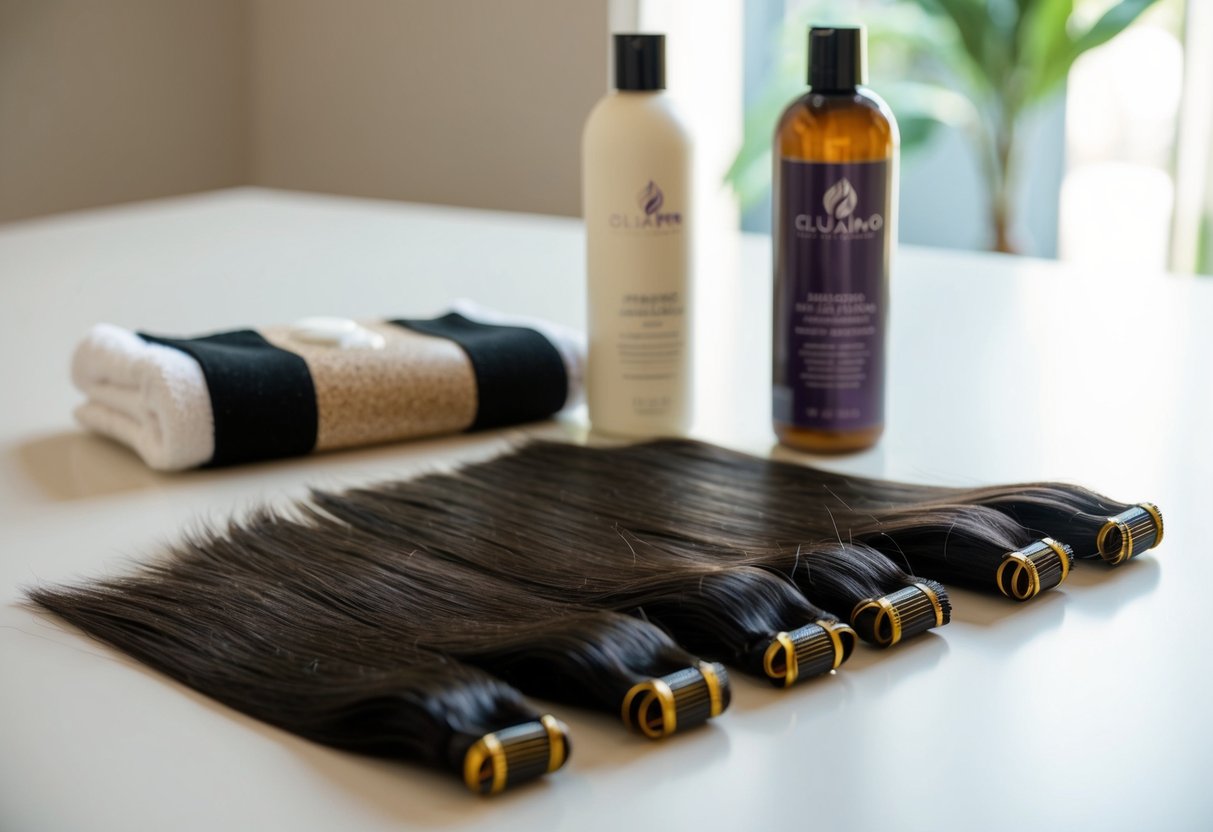Why Are My Hair Extensions Not Holding a Curl: Expert Tips and Solutions

Hair extensions can be a fantastic way to add length and volume to your hair, but sometimes they just won't hold a curl. This can be frustrating, especially if you've spent a lot of time and effort trying different techniques. There are several reasons why this might be happening.
One key reason is that the hair extensions might still have a silicone coating that is weighing down the curls. Silicone is often used in hair treatments to add shine and smoothness, but it can make it hard for curls to stay. Ensuring that the hair is completely clean of any product buildup is essential.
Another common issue is that the hair might not be prepped correctly before curling. Hair extensions, just like natural hair, need to be completely dry and free of any moisture. Using the right products and techniques will help you achieve long-lasting curls and avoid common issues.
Key Takeaways
- Properly clean and dry hair extensions.
- Avoid products with heavy silicones.
- Use the right curling techniques and products.
Understanding Hair Extensions
Hair extensions can add volume and length, but the type and quality of extensions play a significant role in their effectiveness and styling ability. Knowing the different types and sources of extensions helps in making the right choice.
Types of Hair Extensions
Hair extensions come in various forms, each with its own unique benefits.
Clip-In Extensions are temporary and easy to attach and remove. They are ideal for occasional use and people new to extensions.
Tape-In Extensions involve adhering wefts to the natural hair using double-sided tape. They are semi-permanent and can last several weeks.
Sew-In or Weave Extensions are braided into the hair and generally recommended for thicker hair. They are durable and can be styled similarly to natural hair.
Fusion Extensions use a keratin bond to attach the extensions. They are long-lasting and blend seamlessly with natural hair, but the process is time-consuming.
Quality and Source of Hair
The quality of hair used in extensions largely determines how well they hold a curl and their durability.
Synthetic Hair is cheaper but less versatile. It looks unreal and may not hold a curl well.
Human Hair offers a natural look and feel. Remy hair, one of the best types, retains its natural direction from root to tip, minimizing tangling and allowing better style retention.
The Origin of Hair also matters. Chinese hair is often coarser, making it difficult to hold curls, while Indian hair is finer and more versatile. European hair tends to be the best for fine-textured styles.
Choosing high-quality extensions ensures they behave similarly to natural hair, making styling easier and more effective.
Factors Affecting Curl Retention
Several factors influence whether hair extensions will retain curls. These factors include the texture and type of the hair extension, how the extensions are processed, and the techniques and tools used for curling.
Hair Extension Texture
The texture of hair extensions plays a critical role in curl retention. Extensions made from coarse hair tend to hold curls better than those made from fine or silky hair. This is because coarse hair has more body, which helps maintain the shape of the curls.
Wavy or curly extensions may also hold curls more effectively compared to straight extensions. This natural bend provides a foundation for styled curls. Users should choose extensions that closely match the texture of their natural hair for the best results.
Hair Extension Processing
Processing methods used on hair extensions can affect their ability to hold curls. Extensions that have undergone heavy chemical treatments, such as bleaching or dyeing, may have weakened cuticles. This damage reduces the hair’s structural integrity, making it less likely to hold a curl.
On the other hand, extensions that are minimally processed or made from virgin hair tend to hold curls better. These extensions have intact cuticles that provide the strength needed for the curls to last longer. Using sulfate-free and moisturizing products can help maintain the integrity of these extensions.
Curling Techniques and Tools
The techniques and tools used for curling can also impact curl retention. Using a curling iron with the right temperature setting is important. Too low, and the curls won't set; too high, and the hair could be damaged. Typically, a temperature of 300-350°F works well for most extensions.
Proper technique also matters. Curling small sections of hair and holding the curling iron in place for 8-10 seconds helps set the curl. Users should also allow the curls to cool down completely before touching them to ensure they set properly. Applying a heat protectant prior to curling and finishing with a lightweight hairspray can improve curl retention.
Prepping Your Hair Extensions
Getting your hair extensions ready to hold curls starts with proper washing, conditioning, drying, and applying heat protection. These steps ensure your hair is clean, nourished, and safe from heat damage.
Washing and Conditioning
Washing your hair extensions is essential to remove any product buildup or dirt. Use a sulfate-free shampoo to keep the hair from drying out. Gently massage the shampoo into the hair and rinse thoroughly. Make sure all shampoo is washed out to prevent any residue.
Conditioning is just as important. Apply a small amount of conditioner, focusing on the ends where hair tends to be driest. Rinse out the conditioner thoroughly. For especially dry or knotty hair, spray a detangler into your hands and work it through the ends. This will help keep the hair smooth and manageable.
Drying and Heat Protection
Drying your hair extensions correctly is crucial. Pat the hair dry with a towel, avoiding rough rubbing which can cause tangling. Let the hair air dry if possible, or use a blow dryer on a low heat setting. Be gentle to prevent damage and tangles.
Before using any hot tools, apply a heat protectant spray to shield the hair from damage. This creates a barrier that helps keep the hair healthy. Evenly distribute the spray through the hair, making sure every strand is protected. Using a heat protectant is key to maintaining the integrity of the hair extensions while styling them with curlers or irons.
Taking these steps ensures that your hair extensions are ready to hold curls effectively and look their best.
Curling Your Hair Extensions
Properly curling your hair extensions involves choosing the right tools and knowing the right techniques. This ensures that the curls will hold and look natural.
Selecting the Right Curling Iron
Choosing the correct curling iron is essential. Look for one with adjustable heat settings. Extensions may need a higher temperature to hold a curl, especially if they are thick. An iron with ceramic or tourmaline plates is ideal because it distributes heat evenly and reduces damage.
Barrel size is crucial. A 1-inch barrel works well for tight curls, while a larger barrel is better for loose waves. Also, consider using a clipless curling wand for more natural-looking curls.
Using a curling iron with heat protection features helps protect the hair extensions from excessive heat exposure. Applying a heat protectant spray before curling is also recommended.
Setting the Curls
To set the curls properly, start by applying a heat protectant spray to the extensions. Section the hair into small parts, as smaller sections hold curls better. Clamp the end of the hair and wrap it around the curling iron, holding it for about 10-15 seconds.
After releasing the curl, allow it to cool completely. This helps to lock the curl in place. Spray with a light hairspray to set the curls without making them stiff.
Avoid over-brushing. Instead, use fingers to gently separate the curls for a more natural look. This method keeps the curls intact longer and maintains a soft appearance.
Maintaining Your Curls
To keep your hair extensions looking their best, it is essential to use the right products and take proper care of them, especially at night.
Products to Enhance Curl Longevity
Using appropriate products can make a significant difference in how long your curls last. Lightweight styling mousses and curl-enhancing creams add texture without weighing hair down. These products help maintain the curl shape.
Hairsprays are crucial. Opt for a light-hold spray to give your curls flexibility and movement, or choose a firm-hold spray for more staying power. Heat protectants are also essential to prevent damage from curling irons.
Nighttime Care for Curled Extensions
Proper nighttime care ensures that curls stay intact. Silk or satin pillowcases reduce friction, helping to maintain curl shape and reducing frizz.
For more protection, consider using a silk or satin bonnet. Tying hair into a loose bun or braid also helps save the curls. These methods prevent tangles and keep curls defined.
Troubleshooting Common Issues
Identifying why hair extensions won't hold a curl can be tricky. Factors like the type of hair, heat settings, and preparation methods play significant roles.
Handling Synthetic Extensions
Synthetic extensions can be challenging to curl compared to human hair. Synthetic fibers are made from plastics like polyester, which can melt under high heat.
When curling synthetic extensions, it's essential to use low heat settings. Look for a curling iron with adjustable temperature controls. Set the device to around 250°F (120°C). Higher temperatures can damage the fibers.
Always use products labeled as safe for synthetic hair. Heat protectant sprays for synthetic hair can help prevent damage. Foam rollers or other no-heat curling methods are also beneficial. They work by allowing the curls to set without the risk of melting the fibers.
Professional Tips for Best Results
Choose the Right Tools:
Selecting a high-quality curling iron or wand is crucial. The tool should have adjustable temperature settings. Using a heat tool that suits the hair type helps in achieving long-lasting curls.
Prepare the Hair Properly:
Hair should be clean, dry, and free of any residues. If there is leftover moisture, the curls may not hold. It's often best to curl hair that hasn't been freshly washed to give it some texture.
Apply Heat Protectant:
Always use a heat protectant spray before curling. This not only protects the hair from heat damage but also helps the curls stay intact longer.
Use the Correct Temperature:
Set the curling iron to the appropriate temperature for the hair type. Fine hair needs a lower setting, while thicker hair can handle higher heat. Generally, 300-350°F for fine to normal hair and 350-400°F for thick or coarse hair.
Cool Down Curls:
Allow the curls to cool down before touching them. This helps them set better. Pinning each curl up until it's completely cool can provide tighter, long-lasting curls.
Choose the Right Products:
Selecting the right styling products is essential. Use mousse or a texture spray for better grip and hold. Avoid heavy hairsprays that can weigh down the curls.
Avoid Overloading Products:
Too many products can make the hair heavy and limp. Use a moderate amount of styling product to ensure the curls are bouncy and well-defined.
Practice Proper Hair Care:
Healthy hair holds curls better. Regular trims, deep conditioning treatments, and avoiding excessive heat can improve curl retention.
Frequently Asked Questions
This section addresses why hair extensions might not hold a curl and offers tips to enhance curl longevity.
How can I get my hair extensions to hold a curl more effectively?
Use appropriate styling products to create texture. Make sure the hair is completely dry before curling. Avoid shampoos and conditioners that create wax buildup, which can weigh down curls.
What could be causing my hair extensions to go straight after curling?
Leftover moisture in the hair can make it difficult for curls to hold. Using products with silicone can also coat the hair, preventing it from forming lasting curls.
How do I prevent my curls from falling flat in hair extensions?
Start curling on second or third-day hair. Avoid flat ironing hair before curling. Use a volumizing hairspray to add bounce and hold the curls in place.
What are the best practices for curling human hair extensions?
Always curl on clean, dry hair. Use styling products suitable for your hair type. Curl small sections for best results and hold each curl until it cools to set the shape.
Why won't my weave maintain its curl after styling?
Hair not holding curls may be due to its texture. Human hair extensions vary since they come from real individuals. It could also be due to product buildup or improper styling techniques.
What should I do if my hair extensions refuse to curl?
Try different curling techniques, like using a curling iron or rollers. Experiment with different styling products to find what works best for your specific type of hair extensions.

